A haven for wildlifeGlaciers and their surroundings are often havens for wildlife. Many species can survive the cold climatic conditions to be found in glacier-covered regions, ranging from the polar bear in the far north to the penguin in the deep south. Delicate flowers and small mammal species thrive in many alpine regions, adding a new dimension to the study of glaciers, as the following photographs illustrate. |
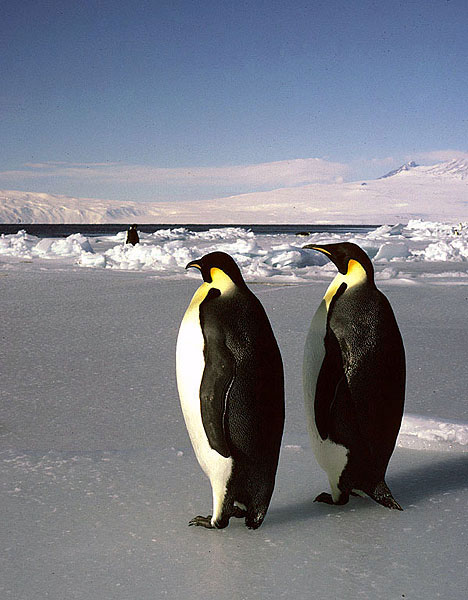 Emperor penguins (Aplendytes forsteri) near McMurdo Sound in spring. They are well known for breeding during the winter in Antarctica.This group’s rookery lies near Ross Island (background). MH |  Adèlie penguin and chick (Pygoscelis adeliae) near Casey Station, East Antarctica. Rocky sites, in the narrow strip of land between the ice sheet and the sea provide ideal nesting sites. MH | 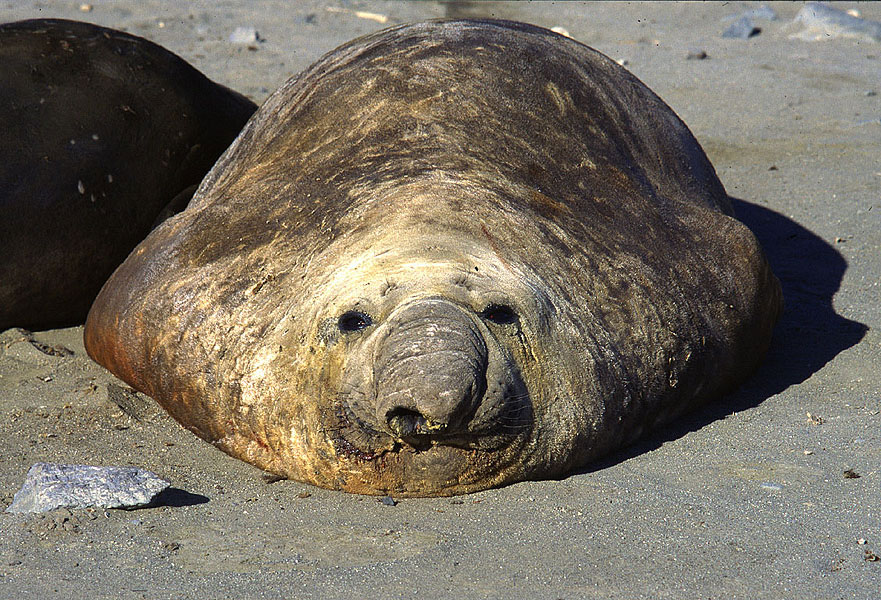 Elephant seal (Mirounga leonine) on the sandy beach at Davis Station (East Antarctica). This is one of several dozen animals that come ashore each spring to moult and gather together in a large heap. MH |  Weddell seal mother and large pup (Leptonchotes weddelli) resting on sea ice near the glacier-fringed coast of Granite Harbour, Ross Sea, Antarctica. MH |
 Antarctic skua (Catharacta Antarctica) at Mirnyy Station, East Antarctica. This large aggressive bird predates on Adèlie penguin chicks and eggs. MH | 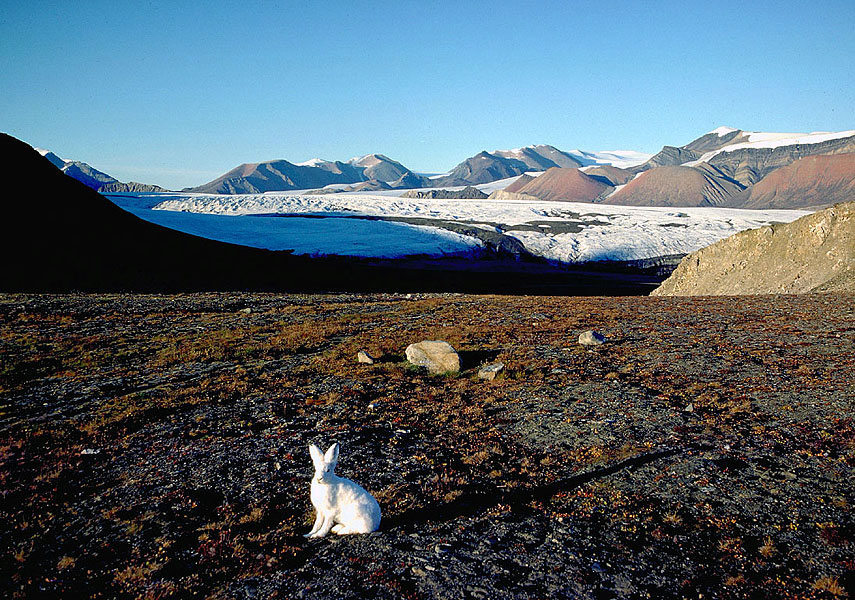 Arctic hare (Lepus arcticus) on sparsely vegetated tundra near Thompson Glacier, Axel Heiberg Island, Canadian Arctic. JA | 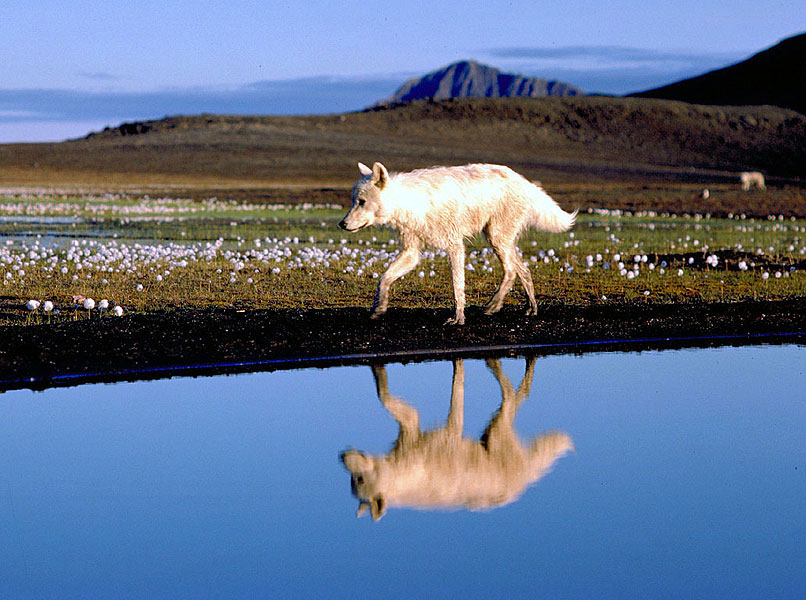 Arctic wolf (Canis lupus), a regular visitor to a glaciological field station on Axel Heiberg Island, Canadian Arctic, trotting beside Colour Lake beneath Wolf Mountain. JA | 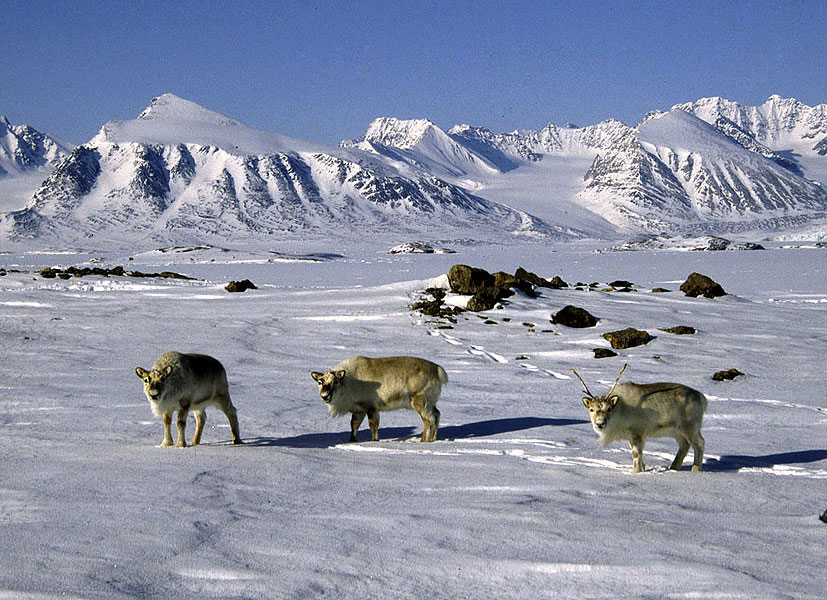 Svalbard reindeer (Rangifer tarundus platyrhynchus) crossing snow-covered tundra on the peninsular of Brøggerhalvøya, NW Spitsbergen. MH |
 Arctic fox (Alopex lagopus) in summer coat near the glacier midre Lovénbreen, NW Spitsbergen. MH | 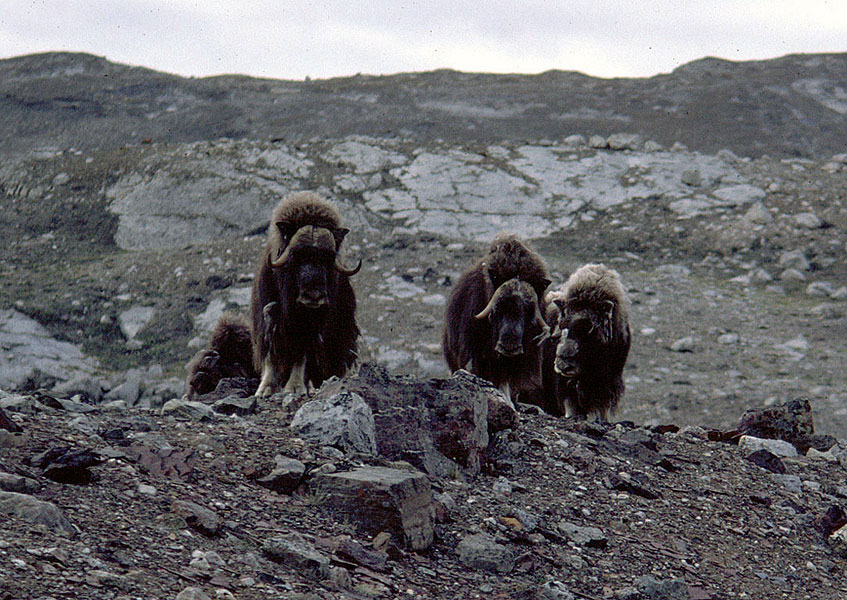 Musk oxen (Ovibos muschatus) in defensive formation near Thompson Glacier, Axel Heiberg Island, Canadian Arctic. MH | 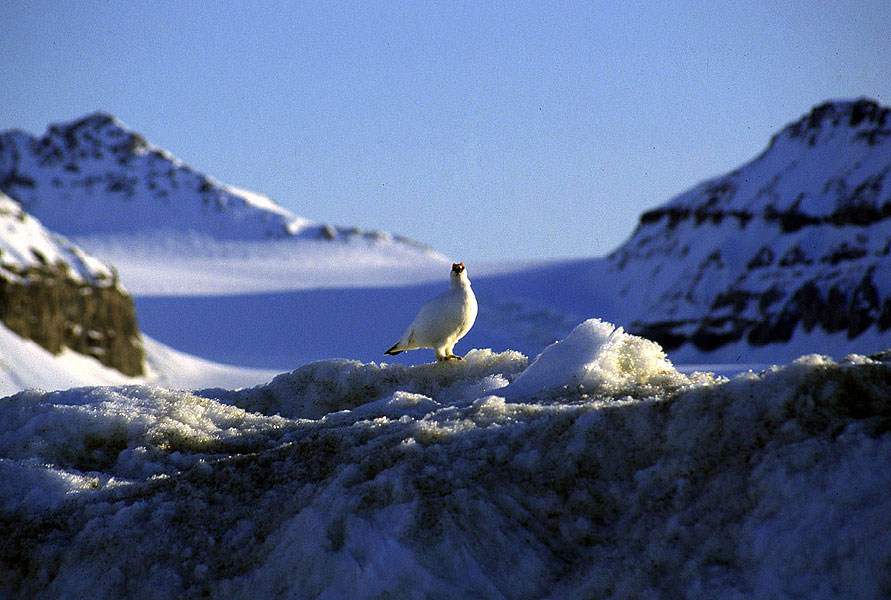 Ptarmigan (Lagopus mutus hyperboreus) in winter plumage, a year-round resident of the Arctic tundra near Ny-Ålesund, NW Spitsbergen. MH |  The small polar willow shrub (Salix polaris) on Axel Heiberg Island, one of the earliest shrubs to colonise ground left bare by glaciers. JA |
 Saxifrage (Saxifrage oppositifolia), one of the earliest plants to colonise deglaciated terrain, Axel Heiberg Island. JA |  White arctic bell heather (Cassiope tetragona), Kong Oscar Fjord, East Greenland. MH |  Lichens covering a glacially transported boulder in the Little Ice Age moraine of Storglaciären, Kebnakaise, Sweden. MH | 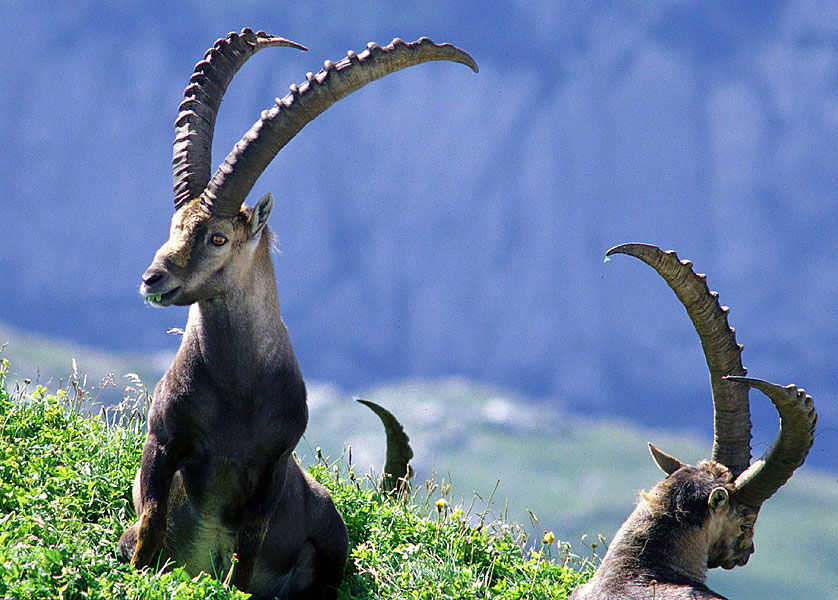 Steinbock (Ibex ibex) have a large body mass and dense fur to maintain body heat in winter. In summer groups of Steinbock seek relief from heat on snow patches or glaciers. JA |
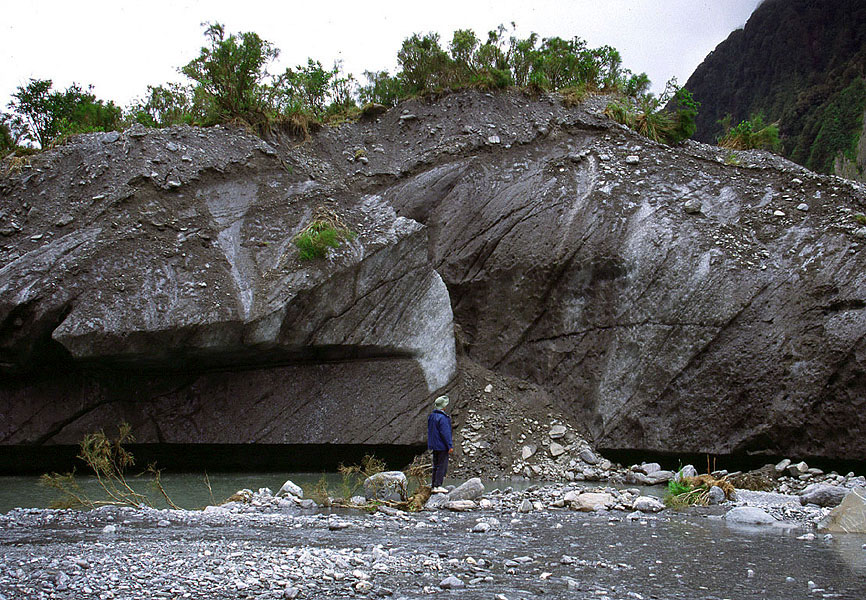 Vegetation in moist, mild areas such as near Fox Glacier, South Island, New Zealand, can generate rapidly even on dead glacier ice. Here a moraine from the early 20th century has a thick cover of trees, although the ground is subsiding as the ice (dirty grey colour) melts. MH |  Hoary marmot (Marmota caligata) in its typical habitat, a scree slope, in Mount Rainier National Park, Washington, USA. JA |  Mountain goat mother and cub (Oreamnos americanus) in Mount Rainier National Park, Washington, USA. JA |  Fireweed (Epilobium fleischeri) on an alpine meadow near Triftgletscher, Berner Oberland, Switzerland. JA |
 Gemswurz (Doronicum clusii) and alpine forget-me-nots (Myosotis alpestris) growing on a lateral moraine of Vadret da Morteratsch, Switzerland. JA |  Alpine tundra with cotton grass, flourishing between roches moutonnées near Oberaargletscher, Switzerland. JA |  The west coast of South Island, New Zealand receives several metres of precipitation a year. Glaciers, such as Franz Josef Glacier, enter the rainforest that drapes the lower slopes. MH |  Colonization of terrain after the retreat of Vadret da Morteratsch, Grisons, Switzerland. Left photos 1985, right 2002. Markers indicate glacier positions. Note tree growth within 17 years. JA |
| Photos: Michael Hambrey (MH), Jürg Alean (JA) |